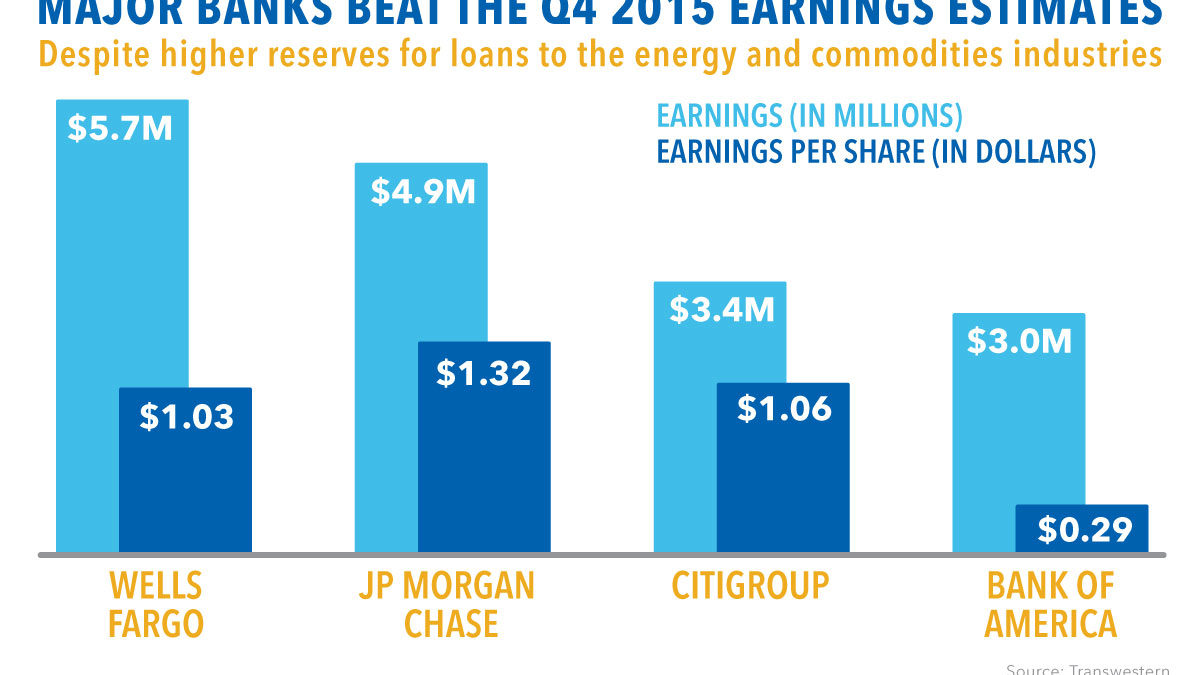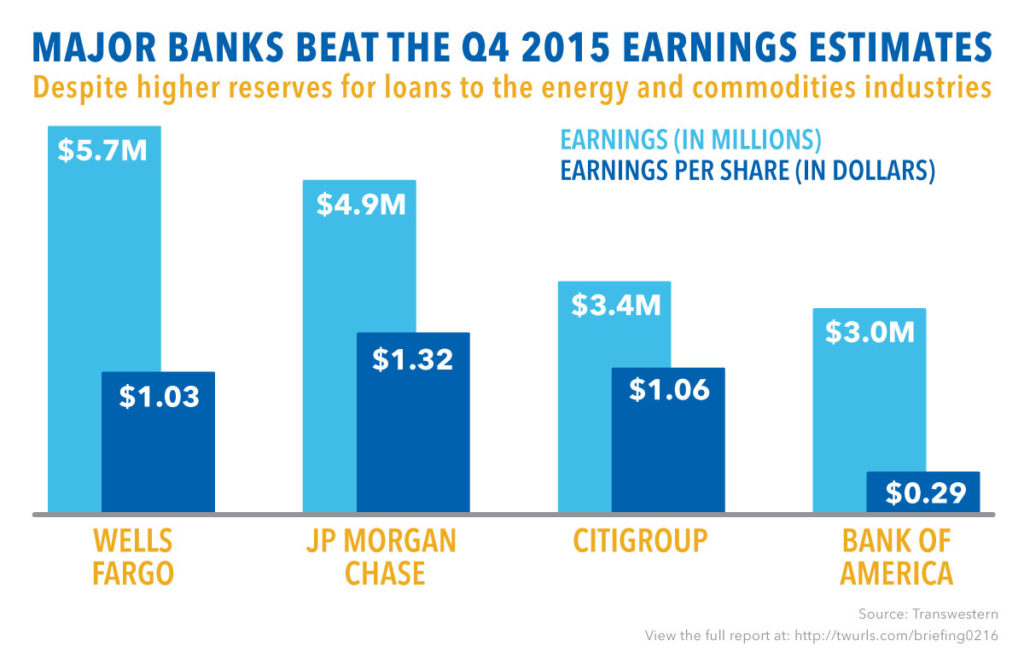
Despite mixed signals and headwinds from around the world, U.S. economic fundamentals remain solid, although unspectacular. In some respects, slow growth has been a blessing in that it probably served to restrain some of the irrational exuberance characterized by this stage of most expansions. Rising wages, employment, home sales and an improving balance sheet should drive slow, but steady growth at a 2.0 percent-plus annual pace, despite the economic slowdown in China, Europe, Japan, Canada, Australia and many other emerging markets. Our biggest risk appears to be that we might talk ourselves into a recession, according to the latest edition of the BRIEFING, a monthly report that covers the global economy and commercial real estate.
20 fast facts for the big picture
The four major banks beat fourth-quarter 2015 earnings estimates despite higher reserves for loans to the energy and commodities industries.
- The energy industry had 26 bankruptcies in 2015 – more than the five previous years combined.
- The January 2016 Institute for Supply Management manufacturing index held steady at 48.2, after falling for six straight months.
- Analysts are forecasting modest 5 percent earnings growth for Standard & Poor’s 500 companies in 2016.
- In 2015, 394 corporations reduced dividends compared to 298 in 2008, reflecting tighter credit and cash flow.
- Airline profits are soaring as a result of low fuel costs and high capacity utilization.
- The U.S. exported its first oil shipment in 40 years after Obama signed a bill abolishing the oil export ban.
- On the global stage, Japan implemented negative interest rates, while the Chinese gross domestic product growth slowed to 6.9 percent in 2015.
- There are many new players emerging with peer-to-peer lending, peer-to-peer payment processing, robo-advisers and crowdfunding platforms.
- “Uberization” of money (crowdfunding) approved to go into effect in 2016 – a relaxation of onerous regulatory and reporting requirements for raising up to $1 million.
- Household wealth rebounded almost $30 trillion since the Great Recession on strength of stock market recovery and rising home values.
- U.S. student debt has reached $1.3 trillion.
- The number of institutional buyers has shrunk for corporate bonds: Volker Rule prevents banks from speculating with customers’ deposits on risky assets such as high-yield bonds.
- Dislocations in the bond markets cause the 10-year AAA commercial mortgage-backed securities spread over swaps to spike from 90 basis points to over 165, slowing new issuance in fourth-quarter 2015 and heading into 2016.
- Bassell III introduced a new risk rating category for commercial real estate: High Volatility Commercial Real Estate, or HVCRE, will be subject to 150 percent risk weighting and applies to commercial real estate acquisition, development and construction loans not otherwise exempt.
- U.S. public plans have a cumulative shortfall of $1 trillion according to a recent Wall Street Journal article.
- More than two-thirds of state retirement systems have lowered pension fund long-term return assumptions from an average of 8.0 to 7.68 percent.
- 2015 was a post-recession record for public pension fund commitments to commercial real estate – 102 systems committed $46.2 billion.
- Yields on commercial real estate continue to be well above the historic average over Treasuries and attractive relative to other asset classes.
- Federal banking agencies issued a joint warning about commercial real estate loans, noting concerns that the economy has limped along at below-trend growth levels while asset prices have skyrocketed. However, other indicators of commercial real estate market conditions and fundamentals show continued improvement of occupancies and rents.

